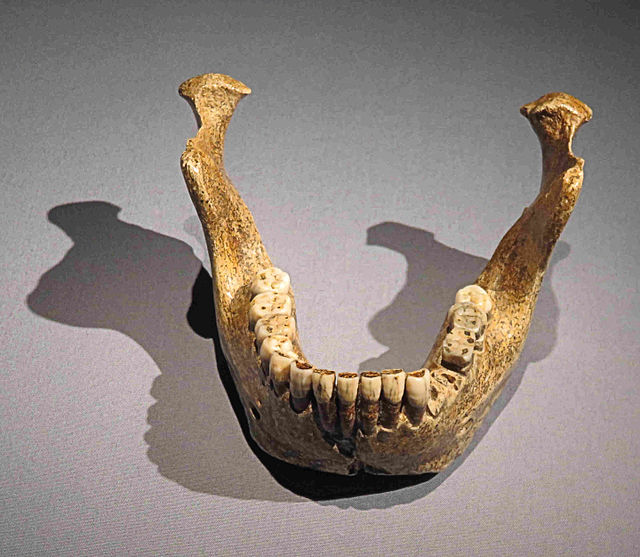Homo heidelbergensis is an extinct species or subspecies of archaic human which existed during the Middle Pleistocene. It was subsumed as a subspecies of H. erectus in 1950 as H. e. heidelbergensis, but towards the end of the century, it was more widely classified as its own species. It is debated whether or not to constrain H. heidelbergensis to only Europe or to also include African and Asian specimens, and this is further confounded by the type specimen being a jawbone, because jawbones feature few diagnostic traits and are generally missing among Middle Pleistocene specimens. Thus, it is debated if some of these specimens could be split off into their own species or a subspecies of H. erectus. Because the classification is so disputed, the Middle Pleistocene is often called the "muddle in the middle".
Homo heidelbergensis
The type specimen Mauer 1
Cast of Sima de los Huesos Skull 5 ("Miguelón") at the Natural History Museum, London
Cast of Kabwe 1 at the Natural History Museum, London
Archaic humans is a broad category denoting all species of the genus Homo that are not Homo sapiens. Among the earliest modern human remains are those from Jebel Irhoud in Morocco, Florisbad in South Africa (259 ka), and Omo-Kibish I in southern Ethiopia. Some examples of archaic humans include H. antecessor (1200–770 ka), H. bodoensis (1200–300 ka), H. heidelbergensis (600–200 ka), Neanderthals, H. rhodesiensis (300–125 ka) and Denisovans,
Homo rhodesiensis ("Broken Hill Cranium"): dated to 324,000 to 274,000 years ago.
Anatomical comparison of the skulls of anatomically modern humans (left) and Homo neanderthalensis (right)






